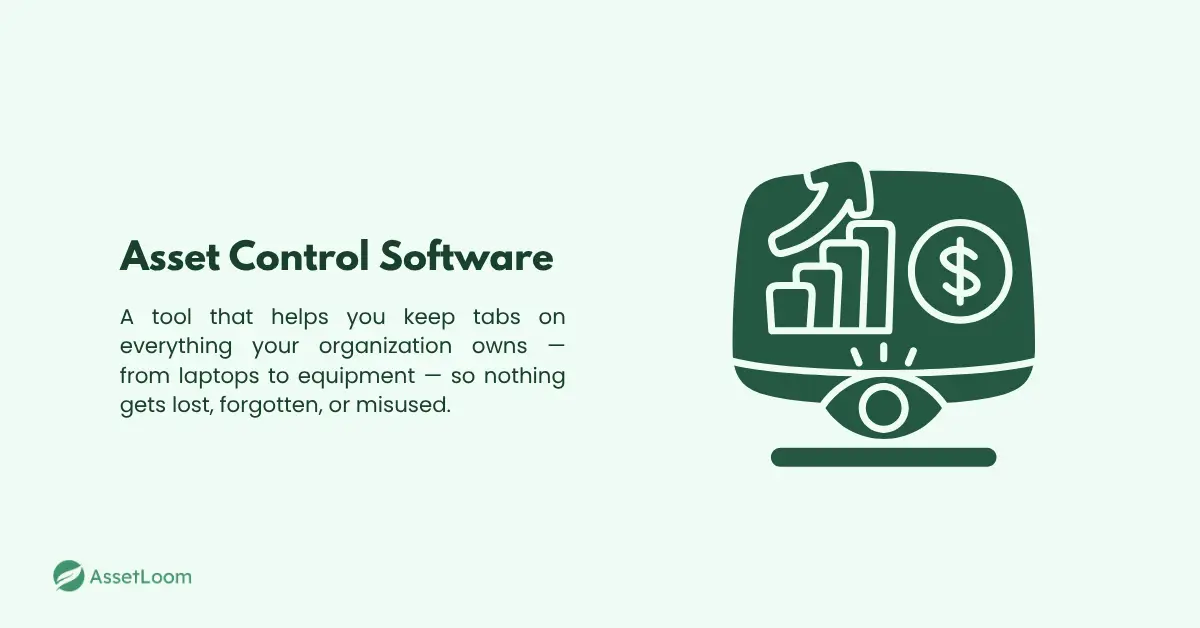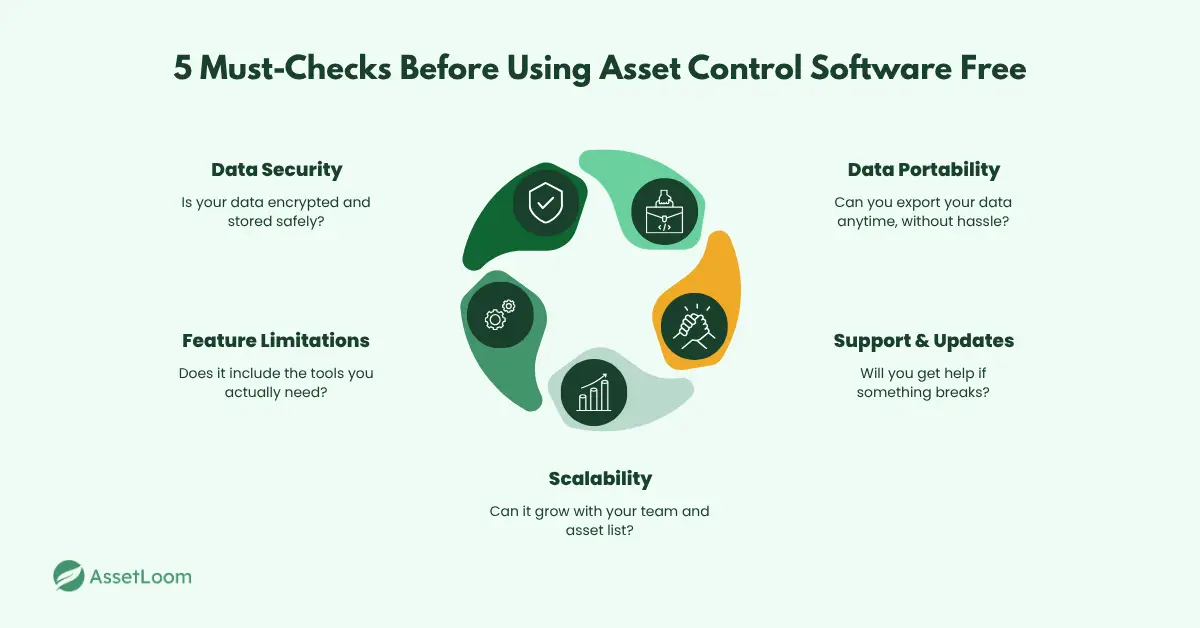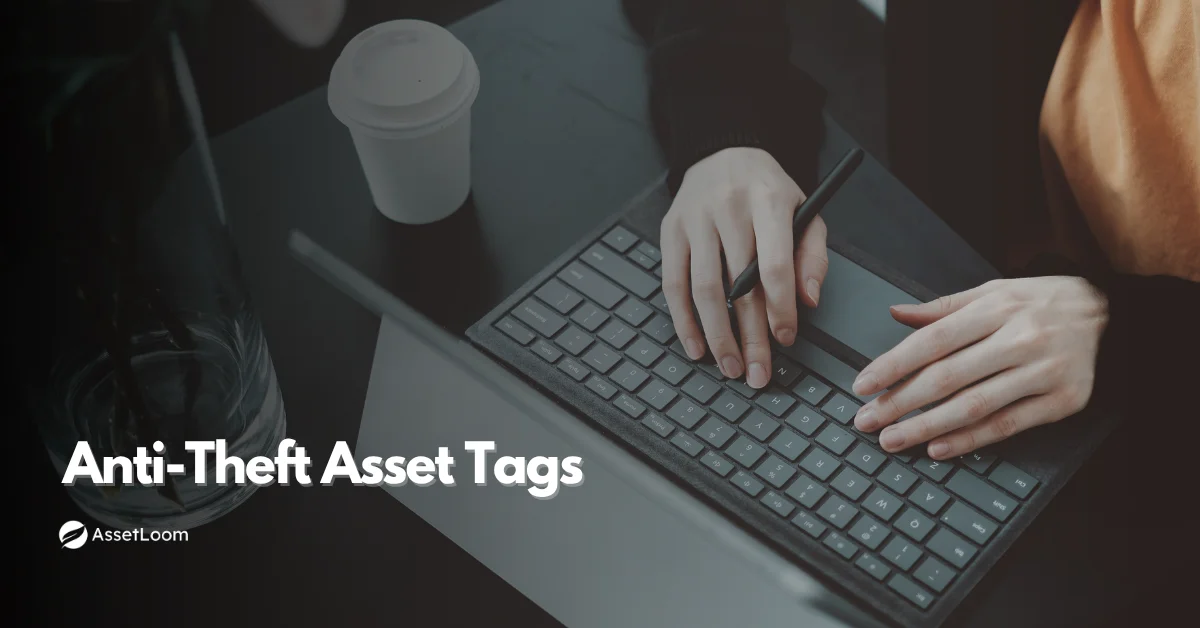5 Things to Check Before Using Asset Control Software Free
Not all asset control software free tools are created equal. Check these 5 things before you commit to avoid risks and hidden limitations.
Free is tempting. Especially when you're juggling assets, spreadsheets, and pressure to "just make it work" without spending a dime, you find a tool labeled asset control software free and think, Perfect! Problem solved.
But not so fast.
Because "free" can cost you — in lost data, wasted time, or tools that collapse the moment your team grows. What looks like a shortcut might just be a slow trap.
Before you commit to any free asset control tool, hit pause. In this post, we’ll break down 5 critical things you must check first to protect your assets, your team’s sanity, and your future scalability.
What Is Asset Control Software?
Before we dive into what to look out for, let’s take a second to talk about what asset control software actually does — and why it matters.
At its core, asset control software helps you keep track of everything your organization owns. That could mean laptops, tools, medical equipment, vehicles, or even software licenses. Instead of relying on spreadsheets (or worse, memory), you get a central system that shows you where things are, who’s using them, and what condition they’re in.
It’s not just about staying organized — it’s about avoiding waste, cutting down on loss, and making smarter decisions. Whether you’re running a school, a clinic, or a growing business, asset control software helps you stay in control without the chaos.
Most tools come with features like:
- Barcode or RFID scanning
- Real-time inventory updates
- Maintenance reminders
- Usage history and reporting
It’s the kind of system that quietly keeps things running in the background until you really need it. And that’s exactly why choosing the right one (even a free one) is so important.

Read Also: Checklist for Choosing the Right Software for IT Asset Management
1. Data Security Isn’t Optional
Let’s be real — if your asset data isn’t secure, the whole system falls apart.
Free asset control software can be tempting, but one of the first things to check is how it handles security and data privacy. Many free tools skip critical protections like encryption, access controls, or regular backups — and that’s a big problem when you’re tracking expensive equipment, sensitive devices, or compliance-bound assets (think healthcare or education).
Ask yourself:
- Does the software encrypt your data, both in storage and in transit?
- Can you control who has access to what?
- Where is your data stored — locally, or in the cloud? And is that cloud provider trustworthy?
Also, don’t assume “cloud-based” equals “secure.” Even free cloud tools can be a risk if they’re not compliant with standards like HIPAA, SOC 2, or GDPR, depending on your industry.
If a tool can’t explain how it protects your data, that’s a red flag. Because when something goes wrong (like a breach or a data loss), you’re the one left cleaning up the mess.
2. Limited Features Can Hold You Back
Here’s the catch with most “free” tools: they only give you just enough to get started, but not enough to scale.
You might get basic asset entries and a dashboard, but start asking for more — like barcode scanning, maintenance alerts, or integration with your ticketing system — and you’ll quickly hit a wall. Some features might be locked behind a paywall, or worse, not offered at all.
That’s fine if you’re managing a small set of assets in one location. But what happens when your team grows? When you need to track mobile devices across departments? Or when your boss asks for a report on asset usage this quarter, and the tool can’t deliver?
Before jumping in, take a moment to list out the features that actually matter to your workflow. Then compare that list to what the free version offers. If it looks too bare, you might spend more time working around the software than actually using it.
The bottom line? Don’t let “free” limit your operations.
3. Scalability May Hit a Wall
Free tools often work fine — until they don’t.
When you're just starting out with a handful of assets, a basic setup can get the job done. But what happens when your organization grows? You add more devices, more users, maybe even new locations. Suddenly, that free software starts showing its limits.
Some tools cap the number of assets you can track. Others restrict how many users can log in or how much storage you get. And in many cases, those limits aren’t obvious until you’ve already invested time setting everything up.
This is where things get frustrating: you’ve built your system, trained your team, and then boom — you hit a ceiling. Now you’re stuck choosing between upgrading (if there’s even a paid plan) or migrating everything to a new platform.
To avoid surprises, always ask:
- How many assets can I track before hitting a limit?
- Can I add more users without paying?
- What happens if we outgrow the free plan?
The goal is to choose a tool that grows with you, not one you’ll have to abandon just when things start scaling up.
4. Support and Updates Might Be Nonexistent
Let’s face it — things break. And when they do, you want someone to help you fix it.
That’s where a lot of free asset control software falls short. Support is either extremely limited, painfully slow, or doesn’t exist at all. You might get a help center with a few outdated articles — and that’s it. No live chat, no email, no one to call when your system suddenly stops syncing.
It’s not just support, either. Free tools often get fewer updates, slower bug fixes, and no guarantee that they’ll keep up with your needs or even stay around long-term.
That might not be a big deal on day one, but wait until you hit a technical issue in the middle of a busy quarter. Or your OS updates, and suddenly the software doesn’t play nice anymore.
Before you commit, ask:
- Is there any support at all for free users?
- How often is the software updated or patched?
- Are there known issues users have flagged, and are they being addressed?
When your operations rely on a tool, even a free one, you can’t afford to be left in the dark.
5. Data Portability and Vendor Lock-In
Here’s something most people don’t check until it’s too late: can you actually get your data out of the software if you need to?
Some free asset control tools make it surprisingly hard to export your data. You might be locked into their system with no clear way to back up, migrate, or even download your full asset records. Others only offer data export as a premium feature, which means you’re essentially stuck unless you pay.
That’s a risky spot to be in, especially if the tool isn’t meeting your needs or the company suddenly changes its pricing or terms.
Before jumping in, find out:
- Can you export your asset data anytime, and in a usable format?
- Is the data yours to keep, or does the vendor retain control?
- Are there any hidden fees if you want to leave?
The best tools (even the free ones) are transparent about this. They make it easy to leave because they’re confident in the value they provide.
Free shouldn’t come with strings attached — especially when it comes to your own data.

Free Isn’t Always a Bargain
There’s nothing wrong with starting with a free tool, as long as you go in with your eyes wide open.
The right free asset control software can help you get organized and stay on top of your assets. But it’s important to understand where those tools may fall short. Missing features, weak security, poor support, or limited scalability can turn into costly setbacks down the line.
Before you commit, take a moment to step back and ask: Does this tool truly support the way my team works today and tomorrow?
A little scrutiny up front can save you a lot of frustration later. Choose with intention, not just because it’s free.

Subscribe for Expert Tips and Updates
Receive the latest news from AssetLoom. right in your inbox

